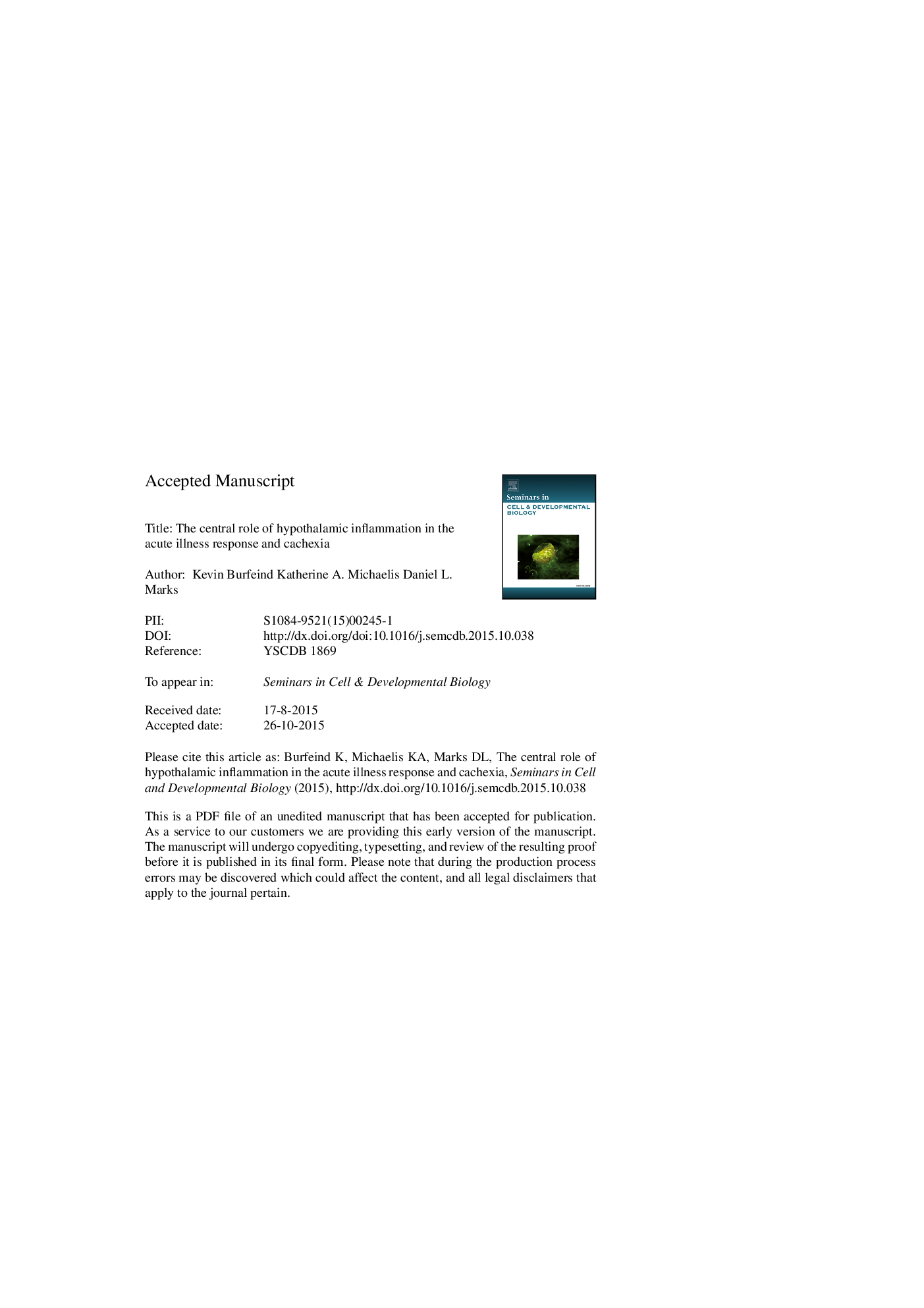| Article ID | Journal | Published Year | Pages | File Type |
|---|---|---|---|---|
| 8480045 | Seminars in Cell & Developmental Biology | 2016 | 36 Pages |
Abstract
When challenged with a variety of inflammatory threats, multiple systems across the body undergo physiological responses to promote defense and survival. The constellation of fever, anorexia, and fatigue is known as the acute illness response, and represents an adaptive behavioral and physiological reaction to stimuli such as infection. On the other end of the spectrum, cachexia is a deadly and clinically challenging syndrome involving anorexia, fatigue, and muscle wasting. Both of these processes are governed by inflammatory mediators including cytokines, chemokines, and immune cells. Though the effects of cachexia can be partially explained by direct effects of disease processes on wasting tissues, a growing body of evidence shows the central nervous system (CNS) also plays an essential mechanistic role in cachexia. In the context of inflammatory stress, the hypothalamus integrates signals from peripheral systems, which it translates into neuroendocrine perturbations, altered neuronal signaling, and global metabolic derangements. Therefore, we will discuss how hypothalamic inflammation is an essential driver of both the acute illness response and cachexia, and why this organ is uniquely equipped to generate and maintain chronic inflammation. First, we will focus on the role of the hypothalamus in acute responses to dietary and infectious stimuli. Next, we will discuss the role of cytokines in driving homeostatic disequilibrium, resulting in muscle wasting, anorexia, and weight loss. Finally, we will address mechanisms and mediators of chronic hypothalamic inflammation, including endothelial cells, chemokines, and peripheral leukocytes.
Related Topics
Life Sciences
Biochemistry, Genetics and Molecular Biology
Cell Biology
Authors
Kevin G. Burfeind, Katherine A. Michaelis, Daniel L. Marks,
